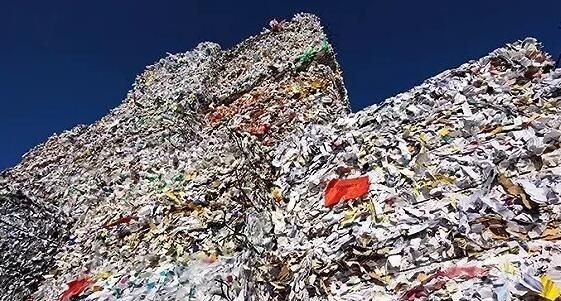Listen to part of a lecture in an environmental engineering class.
聽一段環(huán)境工程學(xué)課程。
Professor: At the end of yesterday's class, we were discussing landfills and the hundreds of millions of tons of everyday garbage which are deposited into them each year in the United States.
教授:在昨天那節(jié)課的最后,我們講了垃圾填埋區(qū)和美國每年填放的上百噸日常生活垃圾。
It's a growing problem!
這個問題越來越突出了。
Quite simply, we are running out of space to put our garbage.
簡單來說,我們用以堆放垃圾的空間快用光了。
And this is especially true for solid organic waste: food scraps from home or food processing plants, waste from farms, that sort of thing.
這對有機固體廢物而言尤其如此:來自家庭或食品加工廠的食物殘渣,來自農(nóng)場的廢棄物,諸如此類。

Did you know that two thirds of the waste sitting in our landfills is organic material?
你們知道嗎?在垃圾填埋區(qū)里三分之二的垃圾是有機材料。
We have government recycling programs for materials like plastics, glass and metal, yet widespread solutions for organic waste materials haven't really been addressed in the United States.
我們有政府開展的回收計劃,回收像塑料、玻璃和金屬的材料,但在美國還沒有處理有機廢物材料的廣泛應(yīng)用的解決方案
I think this is just asking for trouble in the future.
我認為,對于將來而言,這是在自找麻煩。
So today I want to talk about a technology that offers a potential solution to the problem—Anaerobic Phased Solids digestion, or APS digestion.
所以今天我想談一談一項科技,能為此問題提供一個可能的解決方法——厭氧分步分解固體法,或稱為APS分解法。
First of all, what does anaerobic mean? Anyone?
首先,厭氧是什么意思?有人知道嗎?
Student: Without oxygen?
學(xué)生:沒有氧氣?
Professor: Correct! APS digestion uses anaerobic bacteria, ones that thrive in the absence of oxygen, to consume, to break down organic material.
教授:對!APS分解法運用厭氧細菌(在缺氧環(huán)境下大量繁殖)來消化、分解有機材料。
Student: Excuse me. Professor.
學(xué)生:教授,不好意思。
Um... those anaerobic bacteria you are talking about... well, aren't anaerobic bacteria also used in waste water treatment plants?
你說的這些厭氧細菌……污水處理廠不也在用這些細菌嗎?
Professor: Yes. In fact they are.
教授:對,事實上他們確實在用。
Would you like to explain this to the class?
你能給班上同學(xué)解釋一下嗎?
Student: Sure! So when waste water is treated, one of the byproducts is a thick liquid called sludge.
學(xué)生:當(dāng)然!處理污水的時候,其中(產(chǎn)生的)一種副產(chǎn)品是一種粘稠的液體,叫污泥。
And aren't anaerobic bacteria used to break down the sludge?
這些厭氧細菌不是用來分解污泥的嗎?
Professor: That's right.
教授:對。
Anaerobic bacteria have been used in waste water treatment for decades.
將厭氧細菌運用在污水處理中已有幾十年歷史。
Student: So how is this technology different?
學(xué)生:那這項技術(shù)有什么不同?
Professor: Good question.
教授:問得好。
The anaerobic digestion systems used in waste water plants are designed to treat sludge, not solids.
污水處理廠的厭氧分解系統(tǒng)是為處理污泥設(shè)計的,而非固體。
Now, in the past, researchers have attempted to treat solid organic waste with that same equipment.
過去,研究人員嘗試用相同的設(shè)備處理有機固體廢物。
But there was always a problem.
但總是有問題出現(xiàn)。
In order to process the solid waste, the kind we find in landfills, you had to pretreat the solids to turn them into sludge.
為了處理固體廢物(即我們在垃圾填埋區(qū)找到的那種),要先對固體作預(yù)處理,將其轉(zhuǎn)變成污泥。
First, by breaking the material apart mechanically into small particles and then adding a lot of water until you got a kind of thick, soupy mix that the equipment could handle.
首先,用機器把原材料打碎成小顆粒,然后加入大量的水,直到得到一種濃稠的、液狀的、能被設(shè)備處理的混合物。
But that extra step took time and required a lot of energy.
但那一步額外的步驟花費不少時間,而且需要大量能源。
Student: That sounds like it would cost a lot.
學(xué)生:這聽起來成本不低。
Professor: That's right.
教授:對。
But APS digestion is designed specifically to handle solid waste.
但APS分解法是為處理固體廢物而設(shè)計的。
So it is much more cost-effective.
所以性價比高得多。










